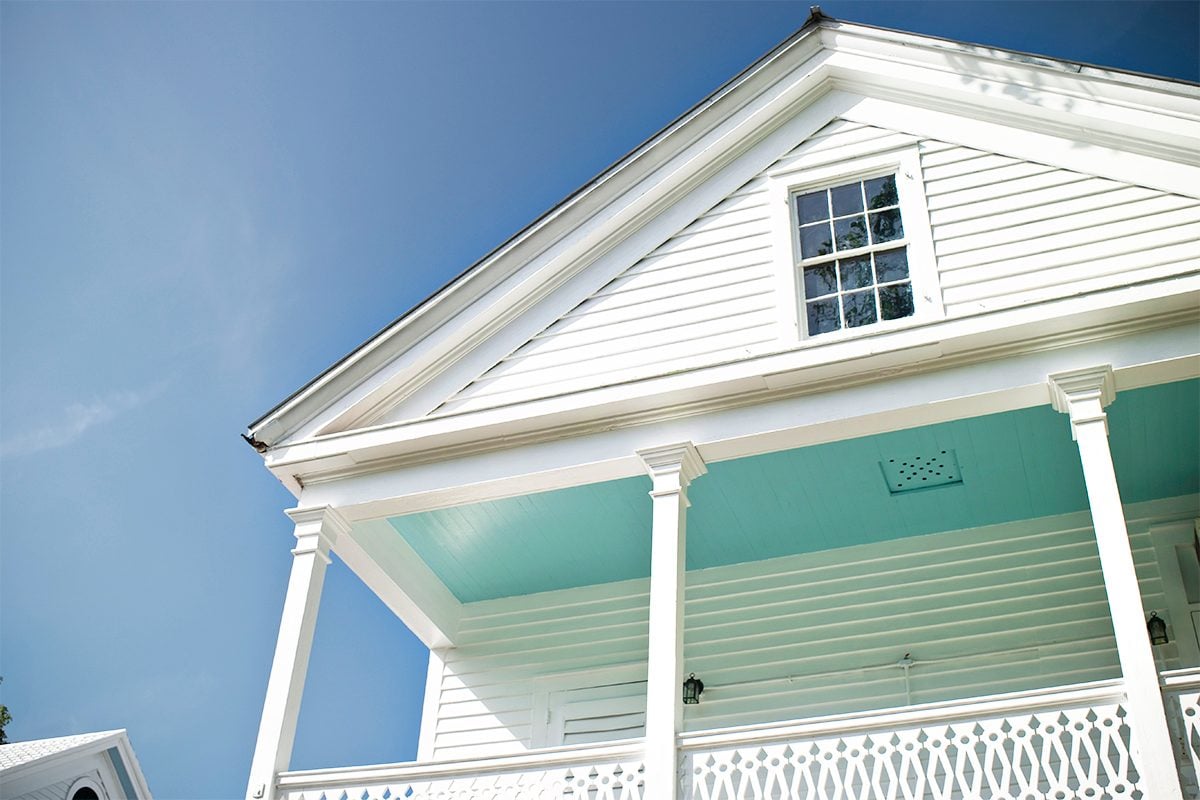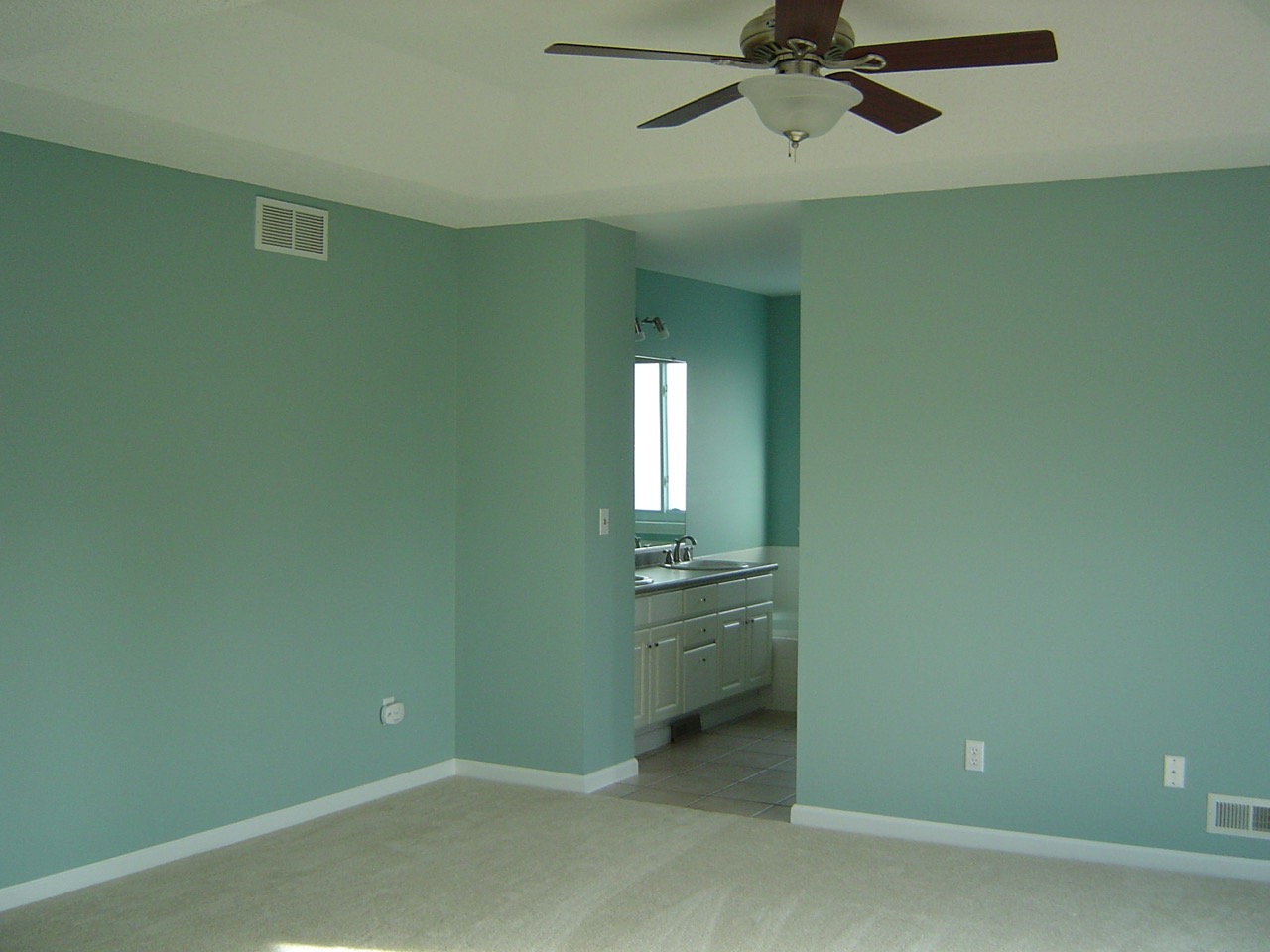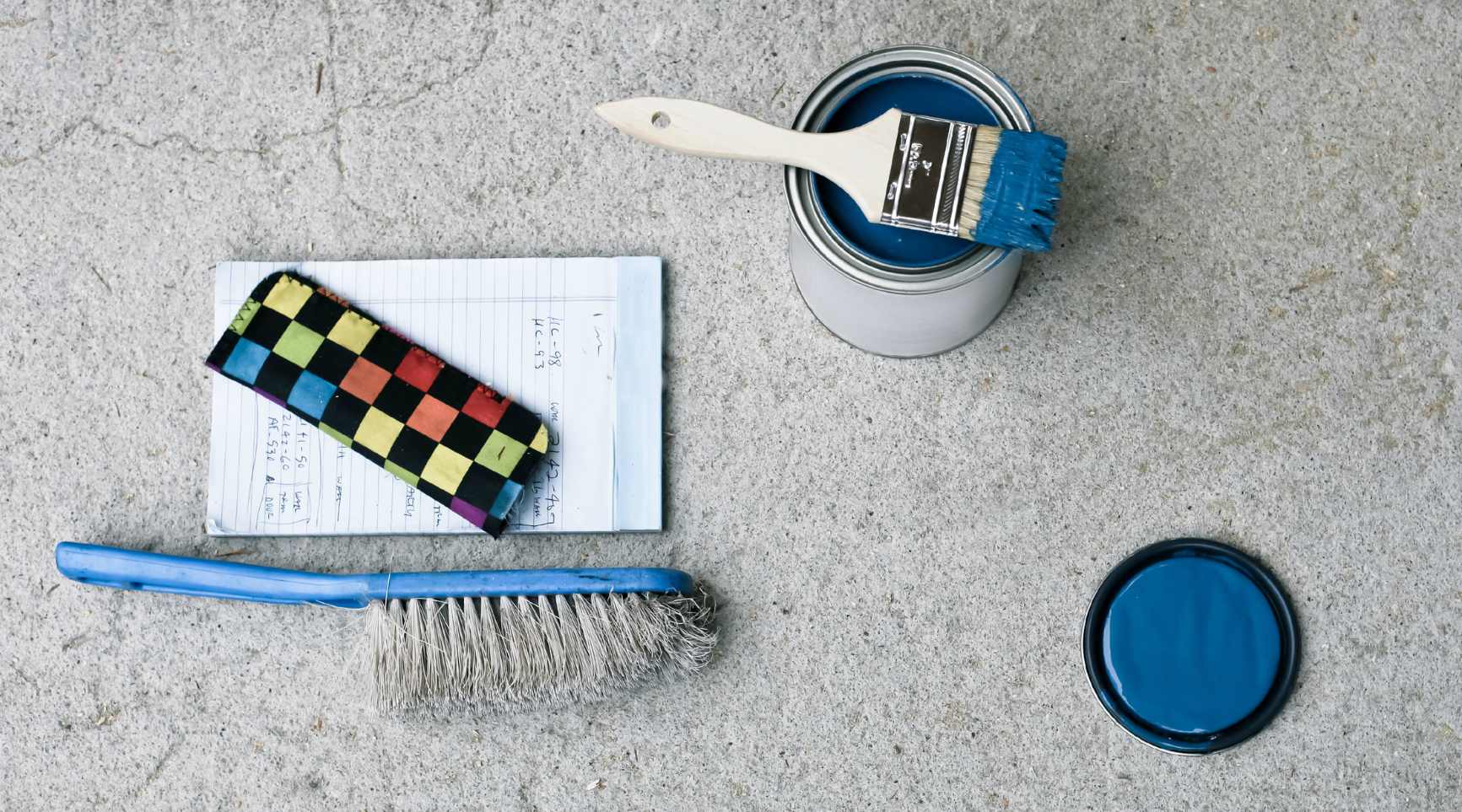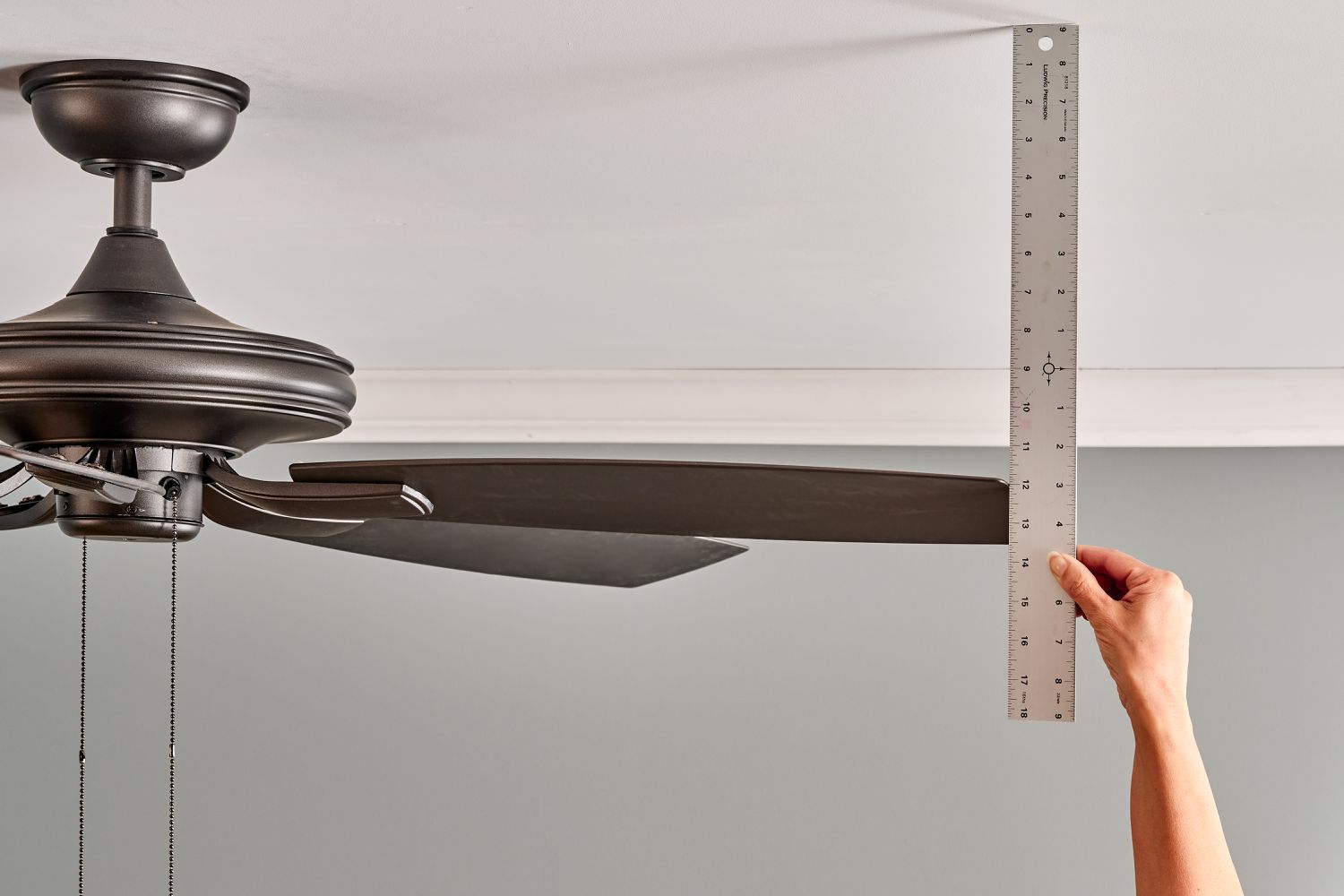

Articles
What Do You Paint First: Ceiling Or Walls?
Modified: January 5, 2024
Looking to paint your ceiling and walls? Find out whether it's best to start with the ceiling or walls first in this informative article.
(Many of the links in this article redirect to a specific reviewed product. Your purchase of these products through affiliate links helps to generate commission for Storables.com, at no extra cost. Learn more)
Introduction
When it comes to painting a room, one of the most common questions that arise is whether to paint the ceiling or walls first. It’s a decision that can have an impact on the overall outcome of your painting project. While there is no definitive answer as to which should be painted first, there are a few factors to consider before making your decision.
Painting a room involves several steps, from prepping the surfaces to choosing the right colors and applying the paint. Painting the ceiling and walls in the correct order can make the process smoother and more efficient. In this article, we will explore the pros and cons of painting the ceiling first versus painting the walls first, so you can make an informed decision that suits your preferences and project requirements.
Factors to Consider
Before diving into the details of each approach, it’s essential to take into account a few factors:
- Time: Consider the time it will take to complete the painting project. Painting the ceiling first may require additional time for the paint to dry before proceeding to the walls.
- Efficiency: Think about how efficiently you can work. Does one approach allow for better time management and productivity?
- Trim and detail work: If your room has intricate trim or detailed accents, you may want to consider the best approach to tackle those areas.
- Personal preference: Ultimately, personal preference plays a significant role. Some people find it more comfortable to start with the ceiling, while others prefer to begin with the walls.
Key Takeaways:
- Consider factors like surface preparation, drip and splatter risks, and personal preferences when deciding whether to paint the ceiling or walls first. Proper planning ensures a smooth and efficient painting project.
- Whether you choose to start with the ceiling or walls, prioritize proper prepping, high-quality materials, and careful painting techniques for a professional and satisfying result. Take your time and enjoy the process!
Factors to Consider
Before deciding whether to paint the ceiling or walls first, there are several essential factors to consider. These factors can help guide your decision-making process and ensure that you achieve the best possible results for your painting project.
- Surface preparation: The condition of your ceiling and walls will determine the amount of preparation work needed. If you need to repair any cracks, holes, or imperfections, it’s generally recommended to tackle these repairs before painting. Consider whether it’s more efficient to complete these preparations on the ceiling or walls first.
- Drip and splatter risk: Painting the ceiling can be a messy task, as there is a greater risk of drips and splatters falling onto the walls if they are already painted. If you’re concerned about potential damage to the newly painted walls, it may be wise to paint the ceiling first to minimize the risk of any mishaps.
- Ceiling height: The height of your ceiling can also influence your decision. If you have particularly high ceilings, it may be more challenging to reach and paint them after the walls are done. In this case, starting with the ceiling may be more practical and efficient.
- Access to equipment: Consider the equipment and tools needed for your painting project. If you require scaffolding or ladders to reach the ceiling, you may find it easier to complete that portion first. On the other hand, if you need to use a roller or brush for the walls, starting there could be more convenient.
- Labor and assistance: If you have help or are hiring professional painters, discuss the best approach with them. They may have expertise and preferences that can influence the order in which to paint the ceiling and walls.
- Drying time: Keep in mind that paint requires a certain amount of drying time between coats. If you decide to paint the ceiling first, you’ll need to factor in the time needed for it to dry before moving on to the walls. If time is a critical factor, you may want to consider starting with the walls instead.
By considering these factors, you can weigh the pros and cons of painting the ceiling or walls first and make an informed decision. Remember, the right approach will ultimately depend on your specific project requirements and personal preferences. Now, let’s dive into the two options and explore their pros and cons in more detail.
Option 1: Painting the Ceiling First
One common approach to painting a room is to start by painting the ceiling. Here are the key steps and considerations involved in this option.
- Clean and prepare the surface: Before painting the ceiling, ensure that it is clean and free from dust, dirt, and any existing paint chips. Use a damp cloth or sponge to wipe down the surface and allow it to dry completely.
- Protect walls and furniture: Cover the walls and furniture with drop cloths or plastic sheets to prevent any paint splatters or spills from damaging them.
- Apply primer: Applying a coat of primer to the ceiling can help improve paint adhesion and ensure a smooth and even finish. Use a roller or brush to apply the primer, following the manufacturer’s instructions.
- Paint the ceiling: Once the primer is dry, you can start painting the ceiling. Use a roller, paintbrush, or paint sprayer, depending on your preference and the size of the ceiling. Begin at one corner and work your way across the ceiling in small, manageable sections.
- Allow the ceiling to dry: After completing the first coat, allow the paint to dry according to the manufacturer’s instructions. Depending on the type of paint used, this may take a few hours or overnight.
- Apply additional coats: If necessary, apply additional coats of paint to achieve the desired opacity and finish. Allow each coat to dry before adding the next layer.
- Inspect for touch-ups: Once the final coat is applied and dried, inspect the ceiling for any areas that require touch-ups or corrections. Use a brush or small roller to fix any imperfections.
Painting the ceiling first can have several benefits. It allows you to work from top to bottom, minimizing the risk of drips or splatters on the freshly painted walls. Additionally, starting with the ceiling can help establish a clean and uniform base for the rest of the room. However, there are also some potential drawbacks to consider.
One downside of painting the ceiling first is that you may need to wait for it to dry completely before moving on to the walls. This can add extra time to your painting project, especially if multiple coats are required. Additionally, if you’re using a ladder or scaffolding to reach the ceiling, transitioning to working on the walls can be physically demanding and potentially risky.
Ultimately, the decision to start with the ceiling will depend on your personal preferences, the specific requirements of your project, and the practicalities of your painting approach. Now, let’s explore the alternative option of painting the walls first.
Option 2: Painting the Walls First
Another approach to painting a room is to begin with the walls before moving on to the ceiling. Here’s a step-by-step guide and considerations for this option.
- Clean and prep the walls: Clean the walls to remove any dirt, grease, or old paint. Fill in any cracks or holes with spackle, and sand the surface to ensure a smooth finish.
- Protect the floor and trim: Cover the floor with drop cloths and use painter’s tape to protect the trim, windows, and other areas that you don’t want to be painted.
- Apply primer: Applying a coat of primer helps to create an even base for the paint. Use a brush or roller to apply the primer, ensuring full coverage on all the walls.
- Paint the walls: Once the primer is dry, begin painting the walls. Start from the top corner and work your way down using a roller or brush, maintaining a consistent stroke and even application of paint.
- Allow the walls to dry: After applying the first coat of paint, allow it to dry completely. This may take several hours, depending on the type of paint used.
- Apply additional coats (if necessary): If the paint color requires additional coats, apply them once the previous coat is fully dry. Make sure each layer is smooth and evenly covered.
- Inspect for touch-ups: After the final coat has dried, carefully inspect the walls for any areas that need touch-ups. Use a brush or small roller to fix any imperfections.
Painting the walls first can have its advantages. It allows you to establish a strong color foundation for the room and provides a sense of progress. By starting with the walls, you also have more freedom to focus on smaller details and intricate trim work without the constraint of painting the ceiling first. However, there are some potential drawbacks to consider as well.
One potential challenge of painting the walls first is the risk of accidental paint splatters or drips onto the floor or trim. It’s important to take protective measures, such as using drop cloths and painter’s tape, to minimize potential damage. Additionally, if you decide to paint the ceiling after the walls, you’ll need to be extra cautious to avoid any accidental marks or smudges on the walls while reaching the ceiling.
Ultimately, the decision to start with the walls will depend on your personal preferences, the specific requirements of your project, and the logistical considerations of your painting approach. Now, let’s summarize the pros and cons of each option to help you make a well-informed decision.
Always start by painting the ceiling first, as any drips or splatters can be easily covered when you paint the walls. This will help you achieve a cleaner and more professional finish.
Pros and Cons of Each Approach
When deciding whether to paint the ceiling or walls first, it’s important to weigh the pros and cons of each approach. Here are the key advantages and disadvantages of painting the ceiling first and painting the walls first:
Read more: How Do You Paint Popcorn Ceiling
Painting the Ceiling First:
- Advantages:
- Minimizes the risk of drips and splatters on the walls.
- Establishes a clean and uniform base for the rest of the room.
- Makes it easier to reach high ceilings and work from top to bottom.
- Disadvantages:
- Requires additional drying time before moving on to the walls.
- Transitioning from working on the ceiling to the walls can be physically demanding.
- Potential for accidental marks or smudges on the walls while reaching the ceiling.
Painting the Walls First:
- Advantages:
- Creates a strong color foundation for the room and provides a sense of progress.
- Allows more focus on smaller details and intricate trim work.
- Eliminates the risk of accidental marks or smudges on the walls while reaching the ceiling.
- Disadvantages:
- Potential for accidental paint splatters or drips on the floor or trim.
- Requires extra protective measures to prevent damage to the walls.
- May make it more challenging to paint the ceiling without potentially impacting the walls.
It’s important to consider these pros and cons in the context of your specific project. Factors such as ceiling height, access to equipment, and personal preferences can influence the decision-making process. Ultimately, the right approach will depend on finding a balance between efficiency, quality, and convenience for your painting project.
Remember, regardless of which option you choose, proper surface preparation, using high-quality materials, and employing careful painting techniques are essential for achieving a professional and satisfactory result.
Now that you have a complete understanding of the pros and cons of each approach, you can confidently decide whether to start by painting the ceiling or walls first. Whichever choice you make, take your time, enjoy the process, and create a beautifully painted space!
Conclusion
When it comes to painting a room, whether to paint the ceiling or walls first is a common question that arises. While there is no definitive answer, considering various factors can help you make an informed decision based on your project requirements and personal preferences.
Painting the ceiling first offers benefits such as minimizing drips and splatters on the walls, establishing a clean base, and easier access to high ceilings. However, it may require additional drying time and careful transitioning from ceiling to walls.
On the other hand, painting the walls first allows you to create a strong color foundation, focus on intricate details, and eliminates the risk of accidental marks on the walls. However, precautions are necessary to prevent paint splatters and it may make painting the ceiling more challenging.
It’s crucial to consider factors like surface preparation, drip and splatter risks, ceiling height, access to equipment, and personal preferences. Additionally, don’t forget to allocate sufficient drying time between coats and inspect for touch-ups.
Ultimately, the choice to paint the ceiling or walls first should be driven by what works best for your specific circumstances. Reflect on your project’s needs, your comfort level, and the desired outcome.
Whether you decide to start with the ceiling or walls, remember to prioritize proper prepping, use high-quality materials, and apply careful painting techniques. These practices are key to achieving a professional and satisfying result.
Now armed with a comprehensive understanding of the pros and cons of each approach, you can confidently embark on your painting project and create a beautifully transformed space.
Frequently Asked Questions about What Do You Paint First: Ceiling Or Walls?
Was this page helpful?
At Storables.com, we guarantee accurate and reliable information. Our content, validated by Expert Board Contributors, is crafted following stringent Editorial Policies. We're committed to providing you with well-researched, expert-backed insights for all your informational needs.















0 thoughts on “What Do You Paint First: Ceiling Or Walls?”